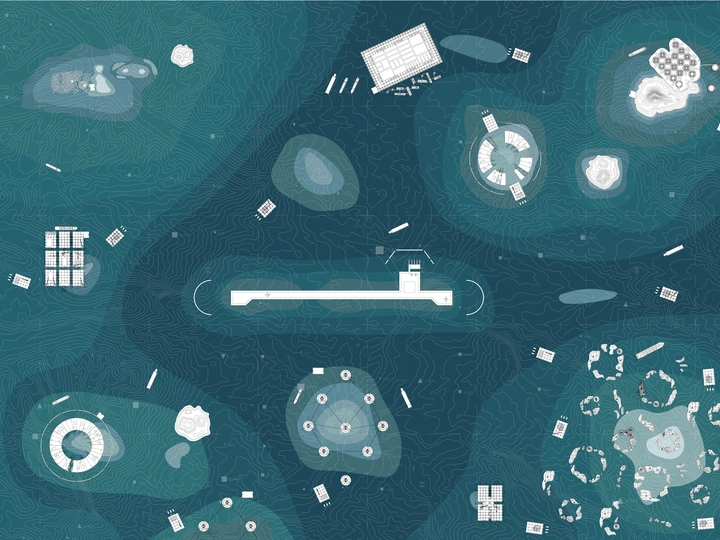Islands As The tapestry Of Time's Threads

Allow me to introduce myself: I am a lecturer, architect, and editor passionate about fluid spaces and future architectural narratives, with a research practice that reshapes design paradigms through strategies arising from the dichotomy of culture/morphology.
Currently teaching at the Royal College of Art, I guide master students through speculative and real-world scenarios, employing cinematography and set design to tackle future urban challenges. At Leeds Beckett University, I teach a MArch studio that reinterprets architecture through nonlinear narratives, viewing cities as dynamic stages molded by their actors. At the University of the Arts Norwich, teaching across all years, we reimagine the existing and uncover stories embedded within it. With a BA and MArch from the Architectural Association, I had the pleasure to collaborate with Pier Vittorio Aureli, Giles Smith from Assemble, Martin Jameson from Serie Architects, and Teresa Stoppani, who enriched my academic background; while working for architecture firms like MVRDV and 7478 Architects, alongside my role as a contributing writer for Data Aided Design magazine, has enriched my professional background.
Writing about the hidden heartbeats pulsating from our surroundings has always been an integral part of my research work, supported by accolades and publications such as an article in Prospettica Wallace Issue 2, a paper for the "Body Matters” NUA international conference, the Dennis Sharp Prize, and AA Writing Prize for my pieces "I-lands," "The Head, The Face, The Mask," and "Mafia & Associates."
Lastly, practicing in theaters and stages informs my teaching philosophy through performative engagement of space. Believing that one cannot experience space without active participation within it, I embrace it as a tool to guide emotions. In this sense, architecture becomes metatheater, a symbiotic collaboration between the inhabitants and the space we imagine, constantly producing layers of meaning.
Once upon a time, islands were bustling hubs, vibrant ports, utopias, dystopias, prisons, and fortresses; yet everything ebbs and flows with time, shifting slowly on its own rhythm. Our focus lies not on utopias or prisons, but on "once upon a time."
Most cultures perceive time as monochronic, fragmenting it into equal units and assigning it value and precision. Island territories often view time as polychronic, looser, slower - infused with personal value. Islands’ culture and inhabitation systems are shaped by this differentiation between island time and haole time.
Over time, islands defy paradigms, crafting dichotomies, oxymorons, and oppositions, weaving multiple storylines. Time perception serves as a synchronizing force, catalyzing a paradigm shift in islands’ architectural history: the unification of islands' cultures through their polychronic treatment of space and morphology. This offers a global islandness, one plural identity.
Islands share not only territorial but also intangible aspects, showing a transoceanic, transclimatic, and transarchitectural connection. A global islandness unfolds the possibility for the "Archipelago of Archipelagos," redefining territorial inhabitation. The "Archipelago of Archipelagos" system explores how islandness forges future narratives of collaboration at an urban, cultural and architectural level, potentially yielding a better world system of inhabiting lands that are sinking.
By sharing the sea as a plain for affiliation, islands emerge pivotal, showing how to inhabit as guests, not as owners. This thinking is about inhabiting the border condition, benefiting the archipelago as a whole.
For the first time, islands become subjects of their narratives, illustrating what has never been drawn, granting it the power to exist within standard knowledge systems. We begin to tell new stories - not once-upon-a-time, but in-the-tapestry-of-time’s-threads.